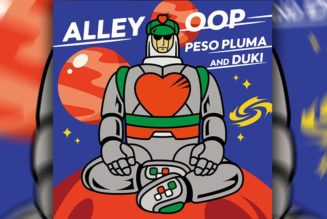
Researchers identified three distinct periods when melodies became significantly simpler.
Blackred via Getty Images
A study of the top five Billboard songs every year from 1950 to 2023—a list that includes hits like “Hey Jude” by the Beatles, “Vogue” by Madonna and “Poker Face” by Lady Gaga—found that popular melodies have gotten simpler over time.
Using algorithms and mathematical models, researchers examined the evolution of pitch and rhythm in hit melodies over the past seven decades. Their results, published last week in the journal Scientific Reports, suggest that both elements have become steadily less complex.
“Conservatively, they have both decreased by 30 percent,” lead author Madeline Hamilton, a computer scientist at Queen Mary University of London, tells the New York Times’ Alexander Nazaryan.
The study identified three “melodic revolutions,” or periods when pop melodies became significantly simpler. The first occurred in 1975, when genres like disco, new wave and stadium rock were taking off. A smaller drop in complexity came in 1996, coinciding with the “growing appeal of hip-hop and electronic music, along with the popularity of MTV,” per the Times. The third revolution came in 2000, which researchers also attribute to the mainstream appeal of hip-hop.
But the simplification of popular melodies doesn’t necessarily indicate a lack of complexity in popular music as a whole. “My guess is that other aspects of music are getting more complex, and melodies are getting simpler as a way to compensate,” Hamilton tells the Guardian’s Nicola Davis.
Other forces at play include music-making technology, which has become increasingly advanced and accessible. Today, with “digital music production software and libraries of millions of samples and loops, anyone with a laptop and an internet connection can create any sound they can imagine,” write the researchers.
Those kinds of technologies can actually introduce complexity to music, which may be prompting artists to simplify other elements of their songs, according to Patrick Savage, a musicologist at the University of Auckland in New Zealand. “We can’t enjoy things that are too complex to comprehend, to remember or to reproduce,” he tells the Times.
Savage also notes that an analysis of melody cannot fully describe the nuances of rap songs. “Western notation was not designed to capture the speechlike microtonalities of rap, which in some senses are arguably more complex than typical sung melodies,” he says.
Hamilton’s research began in 2019, when she noticed that most available datasets related to melody were dominated by classical and folk music, she tells the Times. She decided to compile her own dataset based on the Billboard Melodic Music Dataset. For up to ten hours a day, she listened to all 366 songs and manually transcribed their melodies into a digital notation program.
For each melody, Hamilton measured eight qualities related to rhythm and pitch. She also used a statistical model designed to guess the next note to analyze each melody’s predictability. Finally, she used algorithms developed by linguists to identify when significant evolutions in pop melodies occurred.
Hamilton is already thinking about ways to build on the new study. “Right now, we’re looking at chords,” she tells the Guardian. “We also want to expand our analysis to include more songs, to see if this trend [for melodies] holds up for a bigger set of music.”
Earlier this year, another study investigated how song lyrics have evolved. After analyzing thousands of English-language songs from between 1970 and 2020, researchers found that lyrics have become more straightforward, repetitive and emotional.








